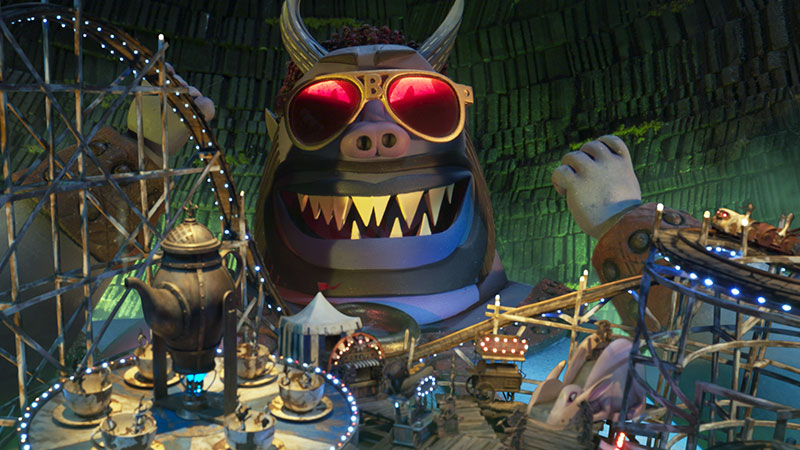Director and VFX artist from Finland Misko Iho talks about using his experience on the production side of visual effects to help him direct projects in a way that supports VFX teams.

Misko Iho is a director and VFX artist from Finland, now on the roster of Wild Gift Content in the US. Misko is well known for his ability to mix brilliant VFX with live action, seen in memorable campaigns from Flonase - directing the terrifying Flonase Grass and Petrified Petals Monsters) to the talented Robot in the longform Daloc Security Doors commercial.
He has also earned a reputation for deeply emotional storytelling including the short film Smile and The Cell, an unexpectedly warm-hearted Christmas spot for LIDL, which won him Director of the Year and the Grand Prix at the Finnish Commercial Film Awards. His unnerving short film The Patient from 2010, has won a long list of awards as well. Misko said, "I love telling fantastic stories that open windows into other worlds or extraordinary situations, pulling us away from the mundane and allowing us to experience events we couldn't otherwise."
He recently completed a campaign for the new Disneyland attraction Mickey's Toontown (via Dentsu and Yellow Shoes), working with Disney's own animation team and BlockheadVFX in New Zealand to blend classic Disney hand-drawn animation with live action footage shot under Misko's direction.
From the Ground Up
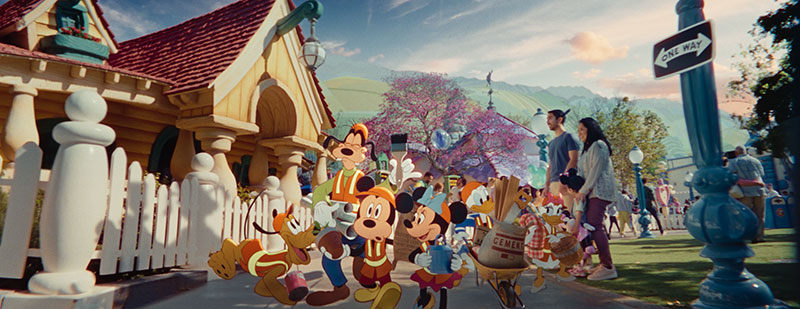
Misko got his start as a graphic artist in the video game industry before working as a VFX artist on feature films, commercials and music videos. "My uncle was working in an early Finnish post-production company and helped me get a job there. No formal teaching was available in those days, so I started as an apprentice working on the Quantel Henry," he said.
He took that early expertise in creative development, technology and storytelling to directing. Recruited to a commercial production company in Helsinki, he directed his first commercial in 2001. Having experience on the production side of visual effects has helped him direct projects in a way that supported the VFX team.
As he pursued directing, he met a number of other directors and cinematographers, encounters that helped develop his approach to projects, especially when he started to work on music videos. "It was such a small industry in Finland that working on a music video was like going to film school. It exposed you to every aspect of filmmaking. I wanted to experiment with story telling and used music videos as a way to do that, as there was less budget to be responsible for," said Misko.
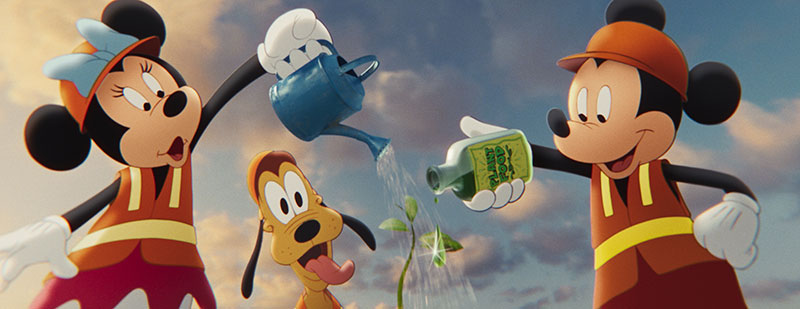
He soon attracted the attention of the industry with a music video for Finnish pop singer Chisu, which won Music Video of the Year at the Emma's (the Finnish Grammys), and with his short film The Patient, mentioned above. From there, he started freelancing on projects in Eastern Europe and Germany.
Effects with Purpose
Misko believes that skilled direction on set is critical to making VFX work as effectively as possible. "Visual effects are just another set of storytelling tools," he said. "The complete storytelling effort starts with the script and story, and so do the effects. Ask yourself and your team - do we need these effects? As you start breaking down the script, also ask - can we achieve the desired result in-camera? VFX artists agree with this practical kind of approach, which often achieves better results in the end than a full VFX approach. When you also have a director on set who knows what the VFX team is capable of, he or she can make decisions about where and how to use FX to ensure they are invisible."
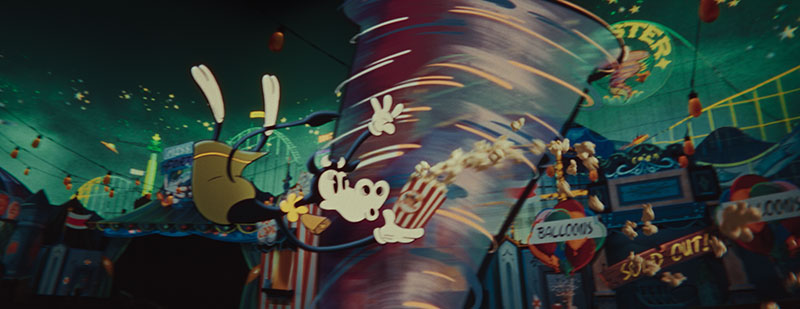
He noted that the director wants to be there behind-the-scenes from the very beginning, deciding how to shoot, planning for the best possible setting for the effects. Also, the more effects there are to deal with, the more important the director's role becomes to help the actors understand what will be happening in post. For set extensions, the director can talk to the crew, camera operators and lighting team, so that they can design the set correctly.
Into the Light
Storyboarding, previs and all types of planning are essential, especially for commercials when time on set is usually limited. You can show motion on storyboards with arrows - that's the stage to try out new ideas, before it's too late to spend time on extra previs. For the Daloc spot, for instance, the team played with a 3D model of the robot in some of the environment shots as a way to visualise different parts of the story.
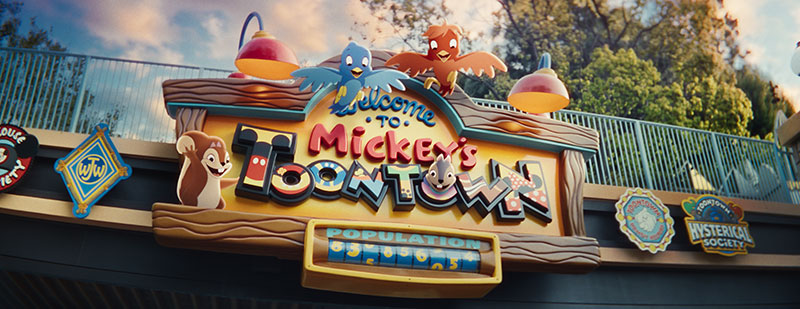
For Toontown, the scaling of the famous 2D characters was important to get right, to give them the correct impact in each shot. Their size couldn't be a set-and-forget measurement. You can see how the artists worked out this challenge in the images below. Dummy effects were also placed on set to ensure the actors knew exactly where their eyelines would be at all times, and stand-in actors were used to set up interactions. Having all of this recorded in the images helps the compositors achieve their 'invisible' work.
For the 2D characters, the question was - are they simply going to be flat, as they have always been, or will they have some 3D characteristics to help ground them in the frames? They decided to preserve the 2D quality as far as possible, because that is what people would be naturally looking for, but in the colour grade, they would tie in those elements through the suggestion of environmental lighting.
Each scene would have its associated HDRI map to tell everyone where the light sources were, what they were contributing to the scene at any moment, and how they affected shadows and reflections. Transferring the information from those light sources to the characters and then to the set was a challenge that needed detailed masking - in other words, lots of manual work.
Coming to Life
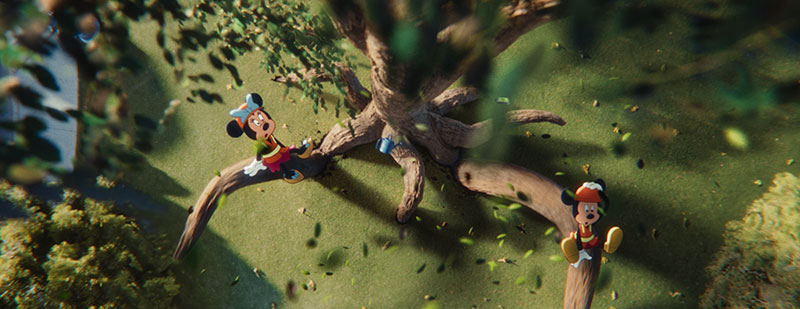
It was important to Misko to capture Disney's charm and impart that feeling to the screen. He said, "These characters come from a hand-drawn world that was ultimately transferred and produced on film. The HFR, textureless aesthetic is not my ideal. We don't go to the cinema for a dose of reality. But, if we prepare for and think about the compositors' work from pre-production, we can effectively blow life into our 2D characters."
He worked with lead animator Eric Goldberg and team at Walt Disney Animation Studios to achieve effortless, engaging performances that draw viewers into this story. Animation calls for another set of questions. For instance, who is this robot? What motivates this monster?
For a keyframe project, Misko directs the animation without an actor to work with and needs to ask these questions, unlike a motion capture project where a thinking human is initiating the moves. In a Disney production like Toontown, natural elements also become alive and intelligent unexpectedly, such as the 3D tree interacting with the characters. It's an opportunity to have fun with the animation and make the story more memorable.
From Set to Compositing
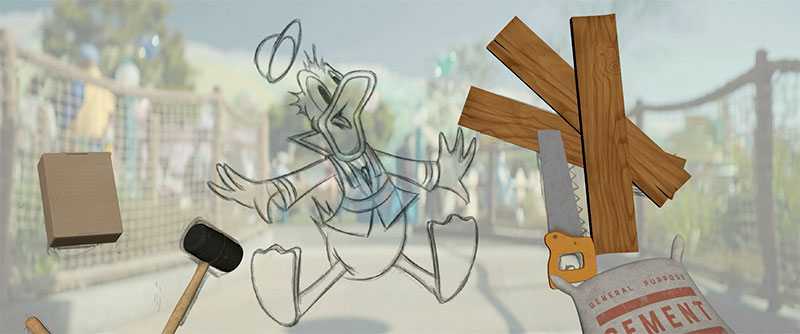
These sketches by Eric Goldberg and storyboard shots by storyboard artist Keith Morange, show the process of incorporating the Disney characters into the live action frames.
Once all of these story elements were in place, a lot of effort went into integrating the characters and their actions into the live action footage. For example, the tools the characters are carrying and the water streams from Donald's boat, are CGI elements made to look like real props, while the brush we see Goofy throwing is an actual live-action prop to create the interaction with the live-action cast. This is a good approach to storytelling and embedding the characters, but many factors needed to work together.
"To be able to achieve a natural looking result, the storyboards that had been prepared for the shoot were passed to Disney's 2D animation team so that they could see the intended flow of movement within the frames," Misko said. "After the edit was locked, Disney then supplied some initial keyframes for the animated characters within the shots. From there, the work involved patient, careful back and forth collaboration between the director, the 2D animators at Disney, and the 3D animators and compositors at Blockhead.
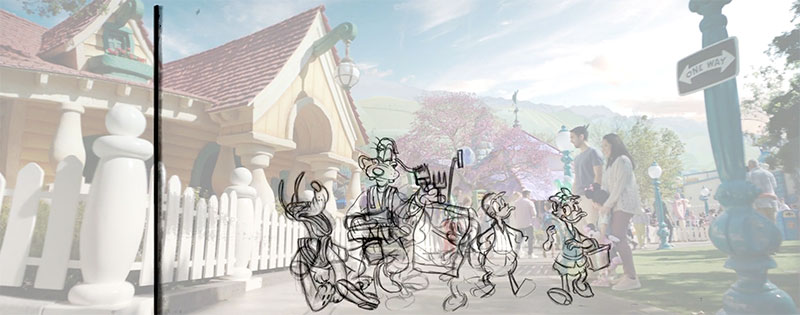
"The animators drew the tools into the artwork first, to help them create the organic movement for the tools along with the characters' motion, taking their work from 2D to 3D animation. Then, as Blockhead's artists composited the characters, they tracked in the 3D elements very precisely, to replace the digital work with live action elements while preserving the motion. Then the full result could be lit to match the live action."
Misko's own VFX background has helped him to anticipate potential difficulties for the team while he is still on set, where he can make a difference. His work involves a lot of decision-making, but the decisions come more easily by always considering the story first. "The audience should not be thinking about effects," he said. "VFX tend to fail when they feel like effects on screen, similar to the way an actor's performance feels when it looks like acting. VFX artists are at their best when they don't regard their work as something the audience will notice, but simply an element of the story." www.wildgiftcontent.com
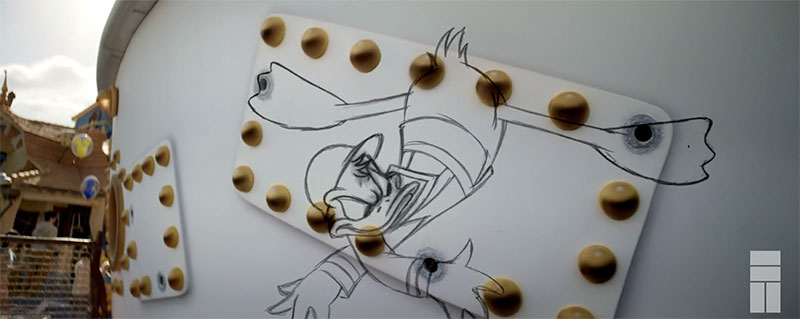
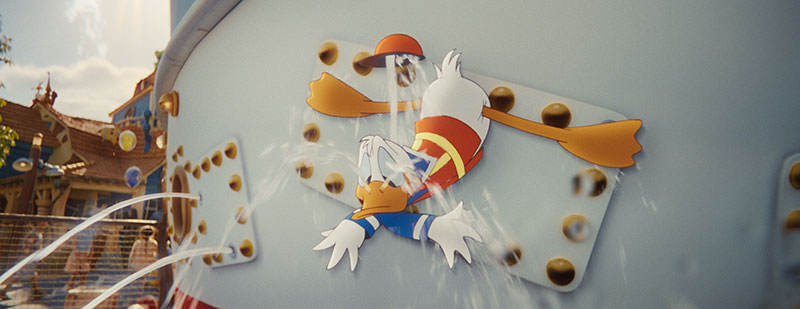
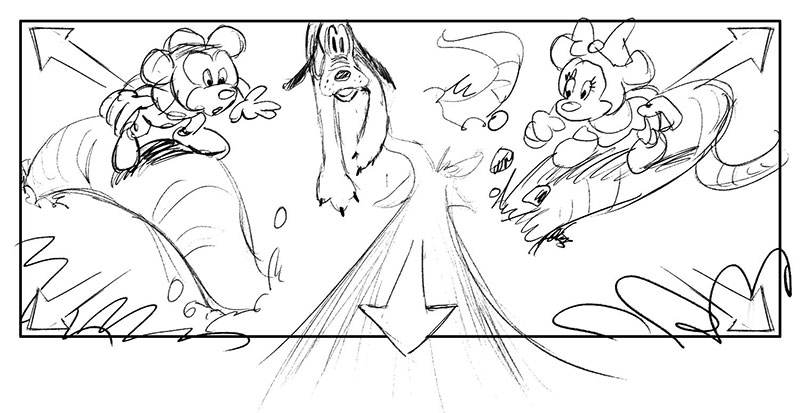
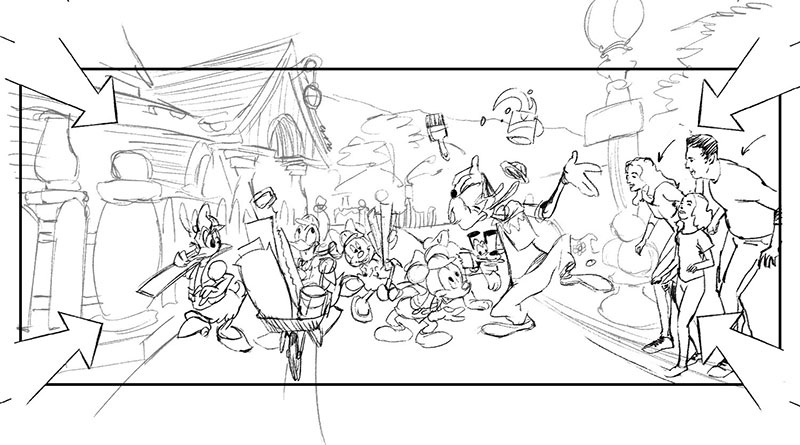
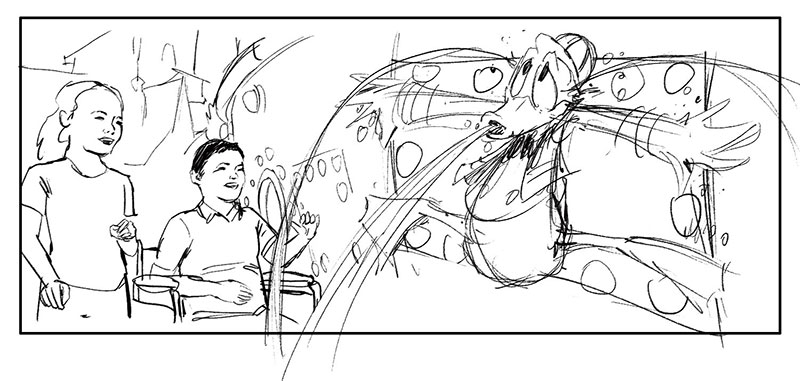
TOONTOWN CREDITS
Agency: Dentsu, Chicago
ECD: Kurt Fries
Creative director: Chris Kloet
Production company: Wild Gift Content
Executive Producer: David Mitchell
Producer: Dave Robertson
Director: Misko Iho
Cinematographer: Bojan Bazelli, ASC
Costumer: Kim Bowen
Editor: Randy Baublis / Cabin Edit
2D Animation: Walt Disney Animation Studios
Lead animator: Eric Goldberg
Visual effects: Blockhead VFX
VFX supervisor: Stefan Coory
Storyboard artist: Keith Morange
Colorist: Henri Pulla
Composer: Dean Grinsfelder / VIsual Music

















